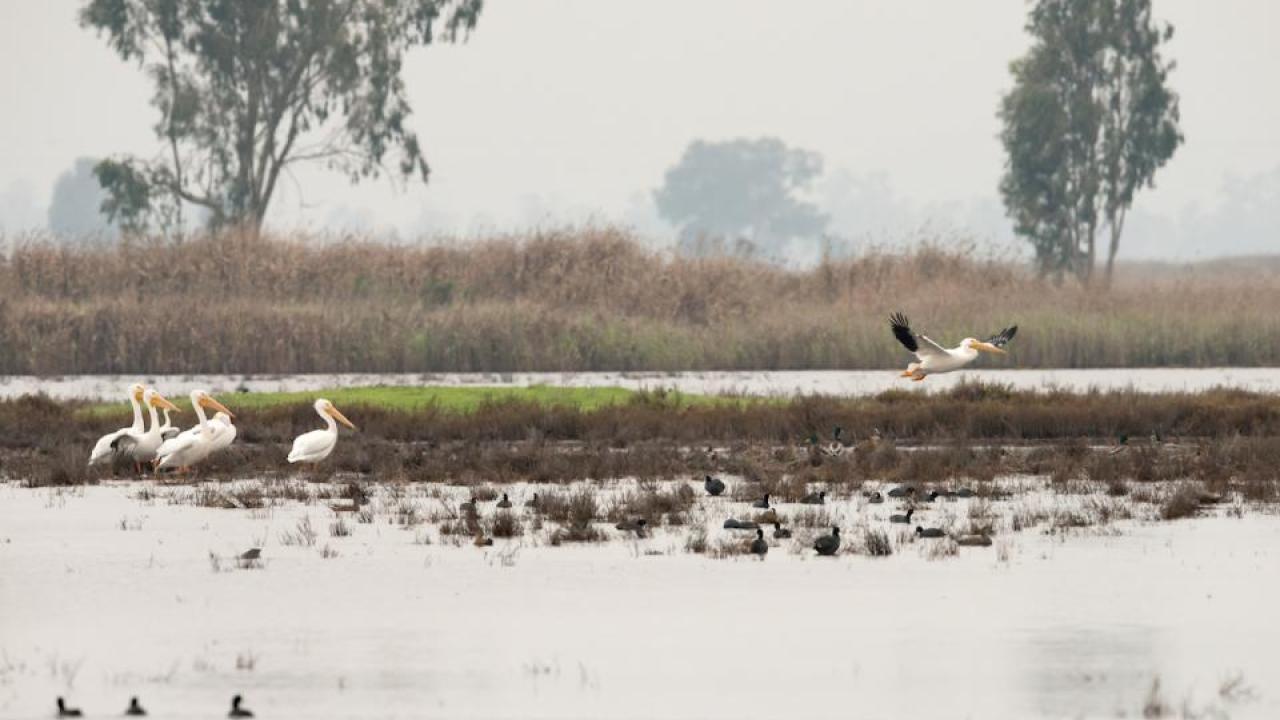
Clams and Water Pumping Explain Phytoplankton Decline in San Francisco Estuary
Timing Could Make a Difference to Ease the Double Punch of Clams and Pumps
A combination of invasive clams and water pumping explains the drastic suppression of phytoplankton in the San Francisco Estuary, according to a study from the University of California, Davis.
Previous studies linked fish declines in the estuary in part to a limited supply of phytoplankton. These tiny microscopic algae make up the base of the food web: Fish eat zooplankton, which eat phytoplankton.
The study, published in the journal Environmental Management, used several modeling steps to investigate the drivers behind the decline. It found that a phytoplankton decline of 97 percent has occurred due to the presence of invasive clams and freshwater pumping by the federally operated Central Valley Project and the State Water Project. These systems supply water to more than 20 million people in California and irrigate millions of acres.
Meanwhile, there exists only 1/92 the number of fish in the water column of the estuary as there were in the late 1960s. The San Francisco estuary — which forms at the confluence of the Sacramento and San Joaquin rivers and the Pacific Ocean — is now considered one of the least productive estuaries in the world.
“This is a huge problem with no easy answer,” said lead author Bruce G. Hammock, a research scientist with the UC Davis School of Veterinary Medicine’s Aquatic Health Program. “Cities need water and farmers need water. But there are native fish in California about to go extinct, and our window of opportunity to help them is beginning to close. The economic and environmental stakes are high. I hope this work can be a starting point for thinking about possible solutions.”
Models test the waters
Scientists had previously accepted the idea that grazing by non-native, invasive clams (Potamocorbula amurensis) contributed to declining phytoplankton. But the freshwater export hypothesis was relatively unstudied. UC Davis Professor Emeritus Alan Jassby suggested in 1994 that water pumping could contribute to the decline in phytoplankton, but the methodology used in the current study was not yet available to confirm it.
This study used a series of model simulations, run with the water pumps on and with the pumps off, to explore their influence using an existing model developed by the California Department of Water Resources. Based on these simulations, the authors reconstructed hydrodynamic variables back to 1956. Then they estimated the influence of water pumping together with the influence of the clams on phytoplankton for the time period of 1967 to 2014.
The simulations were conducted by the UC Davis Water Management lab led by Samuel Sandoval Solis, a UC Davis hydrology associate professor and Cooperative Extension specialist in water management.
A matter of timing
The paper does not make policy recommendations, but it points to areas where potential solutions may be found.
Finding ways to control invasive clams is a start. Another is to consider reducing water pumping during the late summer and fall, while continuing or even increasing pumping during the rest of the year, when flow is high and phytoplankton is far less impacted by pumping.
The authors acknowledge that late summer and fall is when demand from all water users —ecological, agricultural and the general public — is high. Sandoval Solis said discussions about improving water infrastructure to store water in spring and winter in aquifers, as well as water conservation reuse may be necessary.
Just replacing water not the answer
The authors note that pumping issues related to phytoplankton cannot be solved by releasing an equivalent volume of water from reservoirs to replace what was pumped. Those additional water releases increase flow, which — rather than benefiting phytoplankton — flushes them out. This decreases the amount of time phytoplankton spend in undisturbed water, which they need to do so they can absorb sunlight and nutrients to grow.
“A lot of time and money has been invested, and yet we have a system that has crashed and is not recovering,” said Sandoval Solis. “Clams and pumping are good indicators related to phytoplankton. Meanwhile, the causes of the decline of environmental health in San Francisco Estuary are larger and must be addressed systemwide. This study can shed some light about the times we could be focusing on so we can find strategies to reverse the decline.”
Additional study co-authors include Samuel Moose in the UC Davis Department of Land, Air and Water Resources; Erfan Goharian from the Civil and Environmental Engineering Department at University of South Carolina, and Swee Teh from the UC Davis School of Veterinary Medicine.
Funding for the study came from UC Davis.
Media contact(s)
Bruce G. Hammock, School of Veterinary Medicine, brucehammock@gmail.com
Samuel Sandoval Solis, UC Davis Land, Air and Water Resources, 530-750-9722, samsandoval@ucdavis.edu
Kat Kerlin, UC Davis News and Media Relations, 530-752-7704, kekerlin@ucdavis.edu